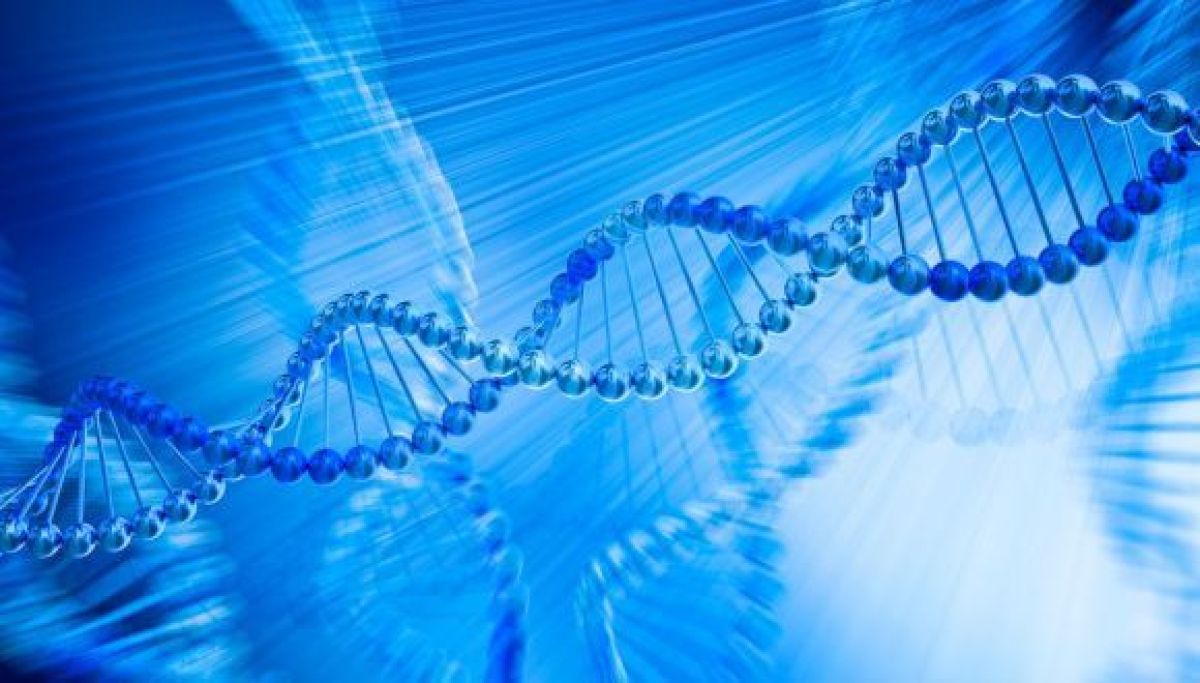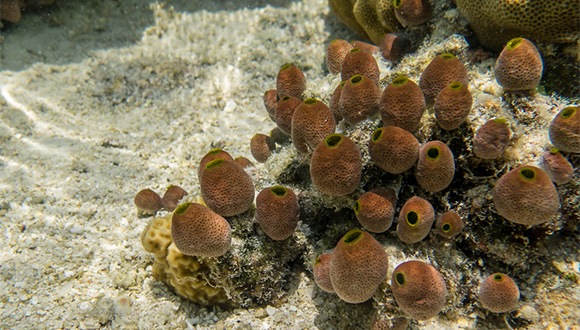How the parents’ environment impacts the lives of their offspring
Three rules that dictate transgenerational epigenetic inheritance in worms – independently of changes in DNA sequences.
Researchers at Tel Aviv University have discovered three rules that dictate epigenetic inheritance – meaning transgenerational inheritance through means other than changes in DNA sequences. Published today in the leading scientific journal Cell, the study was led by Prof. Oded Rechavi and his research student Dr. Leah Houri-Zeevi of the Department of Neurobiology at the Faculty of Life Sciences and the Sagol School of Neuroscience at Tel Aviv University.
Most experiences we acquire in our lifetime will not be passed on to our descendants. For example, our workout in the gym today will not make our children stronger. However, studies conducted in recent years on epigenetic inheritance in worms challenge our traditional concepts regarding the limits of inheritance and evolution, indicating that some acquired traits are in fact passed on to subsequent generations. Prof. Rechavi explains: “Epigenetic inheritance of responses to the environment occurs independently of changes to the DNA sequence, through other inherited molecules. In many organisms, responses to environmental changes, such as stress, involve small RNA molecules that silence or block the expression of certain genes.” In recent years, research on C. elegans worms – an important and widely used model animal – has shown that small RNA molecules can be transmitted to subsequent generations, thereby passing on certain traits.
In previous research projects, Prof. Rechavi discovered that worms transfer to their offspring small RNA molecules containing information on the parent’s environment, such as viral infections, nutrition, and even brain activity, thereby contributing to the survival of subsequent generations. In the current study, Prof. Rechavi and his team tried to understand whether transgenerational epigenetic inheritance via small RNA molecules is governed by specific rules, or alternately, occurs passively and randomly.
According to Prof. Rechavi, “C. elegans is the preferred model organism for research on transgenerational epigenetic inheritance, for several reasons: Its generation time is three and a half days, allowing us to study many generations in a short period of time; every worm produces hundreds of descendants, providing strong statistical validity; environmental exposure can be fully controlled; and each worm fertilizes itself, so that differences in DNA are almost completely neutralized.”
Dr. Houri-Zeevi explains that “Many laboratories have noted that at the level of a population epigenetic inheritance through small RNA endures for about three to five generations in worms. In a previous study, we discovered a mechanism that controls the duration of the inheritance, proving, in effect, that this type of inheritance is a regulated process. But still the question remains: Why are some worms strongly affected by their ancestor’s environmental responses, while others do not inherit the epigenetic effect at all – despite the fact that all offspring are almost identical genetically. This partial inheritance has been known for some time, but how epigenetic material is distributed among the offspring remained a mystery. We wanted to find out whether there was any pattern in the inheritance, that might explain and allow us to predict who would inherit the epigenetic features – and for how long.”
The researchers used a genetically engineered worm carrying a gene that produces a fluorescent protein – making the worm itself glow under fluorescent light. The researchers then initiated a heritable small RNA silencing response against the fluorescent gene and observed which descendants had inherited the silencing response and stopped glowing, and which descendants ‘forgot’ the parental response and started expressing the fluorescent gene once again after several generations. Dr. Houri-Zeevi repeated this process over and over again, in an attempt to understand the rules governing the epigenetic effect. Altogether she examined dozens of worms lineages, including more than 20,000 individual worms. But the most challenging part, according to Prof. Rechavi, was deciphering the different inheritance patterns and understanding the rules behind them.
Ultimately, through in-depth investigation of the inheritance mechanism, the researchers discovered three laws that can explain and even enable the prediction of who inherits the epigenetic information:
- First law: Inheritance is uniform in worms descending from the same mother – namely worms of the same lineage. The researchers were surprised to learn that differences in inheritance observed in previous studies were in fact ‘concealed’ due to the method of examining whole worm populations rather than distinct lineages.
- Second law: Inheritance is very different in worms derived from different mothers, even though the mothers themselves are supposedly identical, because the worm fertilizes itself. The researchers characterized the mechanism that creates the differences between mothers who are genetically identical and found that differences between descendants stem from varying ‘internal states’ randomly adopted by the mothers. Essentially, the mother’s internal state, the level of activity of the inheritance mechanism in each mother, determines the duration of inheritance, and thus the fate of subsequent generations.
- Third law: The longer the duration of the epigenetic inheritance – namely, the greater the number of generations in a specific lineage who inherits the trait – the greater the probability that it will continue on to the next generation as well, “in something like transgenerational momentum, resembling the ‘Hot Hand’ rule in basketball.”
According to Prof. Rechavi, we do not yet know whether the exact same transgenerational epigenetic inheritance mechanism exists in humans as well: “We hope that the mechanism we have discovered exists in other organisms as well, but we’ll just have to be patient. We must remember that genetic research also began with Friar Gregor Mendel’s observations in peas, and today we use Mendel’s laws to predict whether our children will have smooth or curly hair.”
“The idea of acquired traits passed on to descendants is as old as it is outrageous. Even before Darwin and Lamarck, the ancient Greeks argued about it, and it seems to be incompatible with genetic inheritance through DNA,” adds Prof. Rechavi. “The worms changed the rules by showing us that inheritance outside the genetic sequence does exist, via small RNA molecules, enabling parents to prepare their offspring for the difficulties they have encountered in their lifetime. From one study to the next we shed light on the molecular mechanisms and mysterious dynamics of epigenetic inheritance, with the present study providing laws and introducing some ‘order into the chaos’.”





 Did they take their medicine today? Ascidians
Prof. Shenkar and the researcher Gal Navon explain that various pharmaceuticals consumed by humans are not fully metabolized in the body, and high percentage of their active compounds are later excreted in their original form. In addition, lack of public awareness often results in the disposal of unused drugs in toilets or home garbage bins. Currently existing sewage treatment facilities are not suitable for the treatment of medication residuals, and, unlike other pollutants, their final concentrations at the endpoint of sewage treatment are not monitored. Eventually, a substantial amount of pharmaceuticals is discharged into the sea by sewage water. According to the research team, a variety of pharmaceutical residuals can be found in marine ecosystems worldwide – antibiotics, anti-inflammatory drugs, analgesics, anti-depressants and many more.
“Many of these compounds are very stable”, the researchers say, “These take a long time to degrade in the marine environment, and the damage they cause to marine life could be extremely excessive, since these pharmaceuticals are designed to affect biological systems (the human body). For example, various studies performed in different sites around the world have shown that Estrogen, present in birth control pills, leads to the development of female features in male fish in certain species, thus damaging their fertility; Prozac triggers increased aggressiveness and risk-taking in crustaceans; anti-depressants impair memory and learning in cuttlefish, and more”.
Prof. Avisar: “We have been studying the chemo-physical fate of drug residuals in groundwater and surface water for the past 15 years, and their detection in marine ecosystems has been surprising. The results indicate a chronic large-scale pharmaceutical residuals contamination, as well as the absorption of micro- and nano-pollutants, measured at very low concentrations in marine organisms”.
“Our study shows that Israel is no stranger to the global serious issue of seawater pharmaceutical contamination.”, Prof. Shenkar concludes. “The medications we use end up in the sea, mainly through sewage discharge, and cause great damage to the marine environment, indirectly affecting humans, who feed on sea foods that are exposed to such contamination. There are different ways to tackle this problem: on the individual level, we recommend that the population as a whole takes personal responsibility, disposing of unused pharmaceuticals into designated containers – which can be found at pharmacies and health maintenance organizations’ facilities. In addition, we are working to expand research on monitoring pharmaceutical contamination along the Israeli coastline, using advanced analysis of a greater variety of widely used medication, while examining the changes exerted upon the various organisms exposed to the environmental concentrations of those pharmaceuticals”.
Did they take their medicine today? Ascidians
Prof. Shenkar and the researcher Gal Navon explain that various pharmaceuticals consumed by humans are not fully metabolized in the body, and high percentage of their active compounds are later excreted in their original form. In addition, lack of public awareness often results in the disposal of unused drugs in toilets or home garbage bins. Currently existing sewage treatment facilities are not suitable for the treatment of medication residuals, and, unlike other pollutants, their final concentrations at the endpoint of sewage treatment are not monitored. Eventually, a substantial amount of pharmaceuticals is discharged into the sea by sewage water. According to the research team, a variety of pharmaceutical residuals can be found in marine ecosystems worldwide – antibiotics, anti-inflammatory drugs, analgesics, anti-depressants and many more.
“Many of these compounds are very stable”, the researchers say, “These take a long time to degrade in the marine environment, and the damage they cause to marine life could be extremely excessive, since these pharmaceuticals are designed to affect biological systems (the human body). For example, various studies performed in different sites around the world have shown that Estrogen, present in birth control pills, leads to the development of female features in male fish in certain species, thus damaging their fertility; Prozac triggers increased aggressiveness and risk-taking in crustaceans; anti-depressants impair memory and learning in cuttlefish, and more”.
Prof. Avisar: “We have been studying the chemo-physical fate of drug residuals in groundwater and surface water for the past 15 years, and their detection in marine ecosystems has been surprising. The results indicate a chronic large-scale pharmaceutical residuals contamination, as well as the absorption of micro- and nano-pollutants, measured at very low concentrations in marine organisms”.
“Our study shows that Israel is no stranger to the global serious issue of seawater pharmaceutical contamination.”, Prof. Shenkar concludes. “The medications we use end up in the sea, mainly through sewage discharge, and cause great damage to the marine environment, indirectly affecting humans, who feed on sea foods that are exposed to such contamination. There are different ways to tackle this problem: on the individual level, we recommend that the population as a whole takes personal responsibility, disposing of unused pharmaceuticals into designated containers – which can be found at pharmacies and health maintenance organizations’ facilities. In addition, we are working to expand research on monitoring pharmaceutical contamination along the Israeli coastline, using advanced analysis of a greater variety of widely used medication, while examining the changes exerted upon the various organisms exposed to the environmental concentrations of those pharmaceuticals”.




